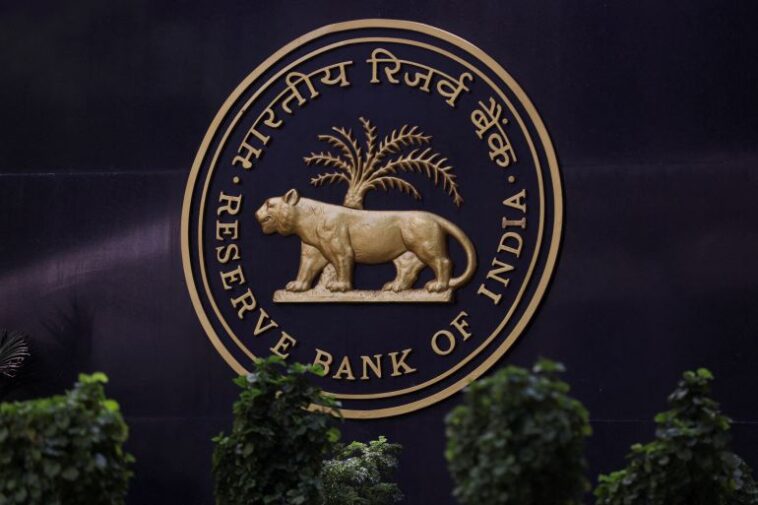The Reserve Bank of India (RBI) recently deviated from the market’s anticipated 25 basis points (bps) slash to the repo rate, choosing instead to impress with a significantly higher 50 bps reduction. This unexpected twist was well-received by banking entities whose stocks displayed impressive progress, with the Nifty Bank specifically garnering a robust 1.5 per cent augmentation, ultimately securing a new record peak. How does such a development shape the outlook for banking stocks? This piece aims to untangle the intricacies of this maneuver and the subsequent responses from the RBI.
While it is generally perceived that this move necessitates a swift transition of rate cut benefits to borrowers that could compromise their yields, several banks feel reassured by the RBI’s pre-emptive monetary modulation. The central bank’s proactive approach in applying a substantial portion of the monetary easing expected has lent undeniable clarity to banking entities. These institutions had, after all, all been raising their strategic defenses in anticipation of a rate cut in the vicinity of 50 bps.
Despite this, some consequences are unavoidable. For instance, banks’ net interest margins (NIM) are bound to endure tension, particularly within the initial two fiscal quarters of FY26. The central reason behind this tension emerges from the fact that loan rates are subject to reevaluation ahead of deposit rates. The historical context provided by the RBI Governor offers some solace by suggesting that such rate transition periods typically persist between six to nine months, leading to a plausible stabilization of NIMs by the fiscal year end.
In the wake of these changes, public sector banks might enjoy a more favorable standing in relation to NIM contractions. This owes to the greater proportion of Marginal Cost of Funds based Lending Rate (MCLR) associated loans in their financial portfolios. Unlike External Benchmark Lending Rate (EBLR) loans, which necessitate immediate repricing following changes in key indices such as the repo rate and T-bill yields, MCLR loans only extend the benefits of rate cuts to borrowers once deposits undergo repricing.
It is worth acknowledging the substantially moderate loan growth noted in FY25, at 11 per cent year on year. This slowdown can be attributed to the influence of electoral proceedings and a dwindling capex demand in FY25. With the newly instituted rate cuts, however, it is reasonable to anticipate an upturn in loan growth for FY26, surpassing the previous fiscal year.
Credit reliant sectors such as infrastructure, real estate, and the automotive industry form potential arenas of heightened demand. Additionally, the personal finance arena could witness an uptick, particularly due to reductions in personal income tax as declared in the newly unveiled budget.
Banks have expressed unshakeable confidence about their deposit gathering potentials. A further joyful revelation for the banking industry was the 100-bps reduction in the Cash Reserve Ratio (CRR), an act exceeding expectations. As per the Governor’s remarks, a 3 per cent CRR is deemed sufficient, and the CRR cut will liberate liquidity worth ?2.5-lakh crore, contributing to a more palpable ease in funds availability.
This development is likely to alleviate some pressures bearing on NIM contractions. The outcome of the rate cuts can also enhance other income growth for the banks, representing a dual-thronged boost to the sector.
The aftermath of the rate cuts also holds positive implications for the Adjusted Available for Sale (AFS) portfolio of banks. As the yields of government securities recede in response to the rate cuts, the banks’ AFS portfolio may experience a surge in their marked-to-market profits, uplifting the institutions’ cumulative assets and returns.
While concerns about NIM compression persist in the short term, the benefits elaborated upon in the previous sections are likely to overshadow those risks. The turbulent balance of changing margins is a fleeting phase in light of the overall profitability that this approach promises for the banks.
In summary, the unexpected 50 bps reduction in the repo rate, while initially perceived as a challenge, has presented a multitude of opportunities for banks. The interest rate matrix of the country has undergone a transformation with this move, potentially reshaping the economic landscape in notable ways over the upcoming quarters.
The most prominent effects of these changes might be seen in sectors heavily dependent on credit, including infrastructure, real estate, and automobile industries. Additionally, personal finance and retail loans could feel the positive impacts of this economic shift, fostered by a decrease in personal income tax as announced in the budget.
Banks will also see enhanced deposit mobilization, further supporting the economic health of these institutions. This positive development has been strengthened by the recent 100-bps cut in the CRR, which helps ease fund availability.
Overall, although NIM compression may present a temporary hurdle for the banking industry, the long-term advantages tied to these unexpected alterations far outweigh these challenges. Impacts from these changes are bound to encourage growth, increasing the potential for greater yields, and marking an optimistic future for bank stocks.

